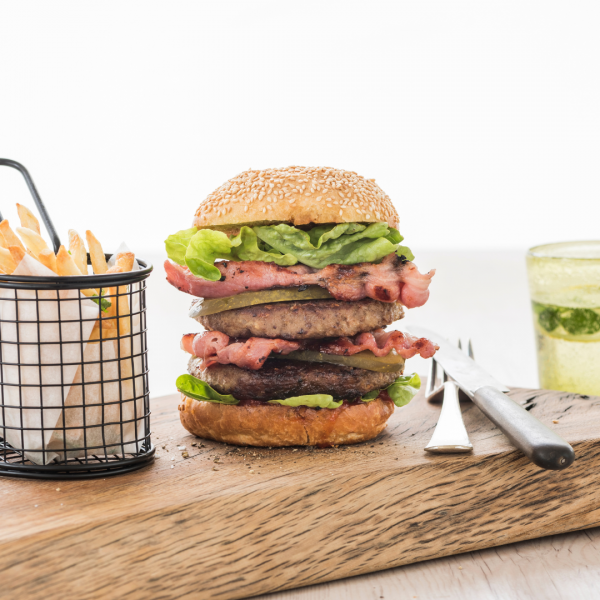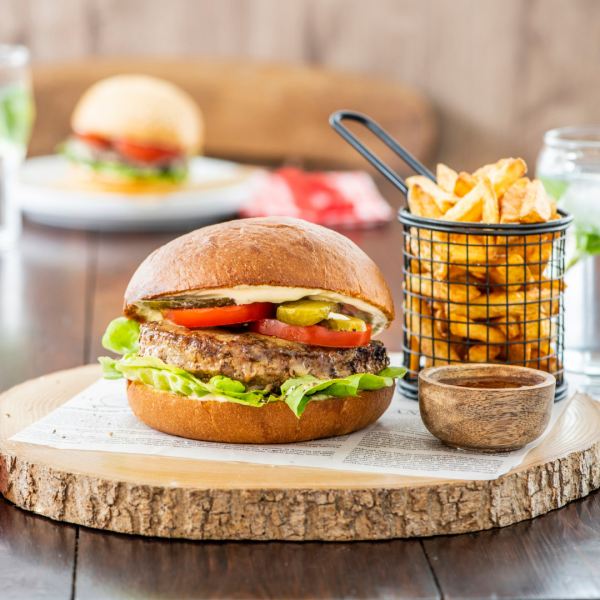
Hamburger History - Part II
who was number one with a bun?
Below we recap part 2 of the history of the hamburger. Click here to read Part 1 and get up to speed.
Much like the hamburger itself – its history can be divided into two parts. The first, which we covered in a previous article, is what we refer to as ‘pre bun’. In that era, mounted soldiers would tenderise their patties under the saddle of their horse (I’m not joking), and a bit later, the patty became known as ‘The Hamburg steak’.
In this article, we cover the post-bun era of the world’s favourite fast food. I hope I haven’t just started a turf war with pizza lovers, but it’s true - no other fast food is consumed as much as the humble hamburger. McDonald’s has stood on the dais for many years as the world’s number one fast-food chain. Founded in California in 1940, it now has over 36,000 restaurants in more than 100 countries.1
The fight for number one
Who invented the original hamburger is a heavily contested title and much-debated subject. It has even been through the American legal system and created feudal rivalries between many municipalities.
Let’s go back to where we left off in the previous article, America in the 1880s. Within the space of ten years between 1885 and 1905, no less than four burger-flipping pioneers will claim to have been the first to place a patty between two bits of bread-like material and call it a hamburger.
In 1885, the Menches Brothers claim they ran out of pork sausages they were selling at Erie County Fair in Hamburg, New York, and so put beef into a sandwich, thereby creating a burger. They called this sandwich the “hamburger” after Hamburg, New York, where the fair was being held.
Meanwhile, that same year, Charlie Nagreen, aka "Hamburger Charlie," apparently squashed a beef meatball between slices of bread so his customers could walk while eating — a recipe he claimed as the first hamburger.
Fast forward five years, to the first documented appearance of flame-grilled beef patties in a sourdough bun, as opposed to between two slices of bread. This was created by Oscar Weber Bilby and his wife Fanny to celebrate the Fourth of July.

Grandson Harold Bilby describes the family legend:
“Grandpa took some ground Angus meat and fired up a big batch of hamburgers. When they were cooked all good and juicy, he put them on my Grandma's homemade buns. He served those burgers on buns to neighbours and friends...”
So then, how did it come to pass that the United States Library of Congress credits Louis Lassen with creating the first hamburger in 1905? Perhaps it was because he was the first to establish what we now call a ‘burger joint.’: Louis Lunch. And having ‘world’s first’ over the door was and still is good for foot traffic. It turns out, the hamburger is an icon of the American working class and laying claim to its beginnings is big business.2
In 1921, Billy Ingram and Walter Anderson opened the first fast-food hamburger establishment, White Castle, in Wichita, Kansas. Their main offering was a small 5-cent hamburger, which they encouraged customers to purchase “by the sack”.
The hamburger grew in popularity, hindered only by food shortages and meat rationing of World War II. During the war, American soldiers took hamburgers overseas with them. The burgers, after all, were easy to make and helped to cure some of the homesickness felt by the troops.
When the McDonald brothers opened their Burger Bar Drive-In in San Bernardino, California, in the 1940s, the hamburger made its official debut in the ‘burbs. Toward the end of the 1950s, McDonald’s had cooked, constructed and sold over 100 million hamburgers. Today, they sell over 75 hamburgers per second! 3

How about hamburger history down under?
Aussie burger lovers, have you ever noticed how Hungry Jack’s logo looks similar to Burger King’s? In 1971, 28-year-old Jack Cowin bought the rights to franchise Burger King in Australia. Unfortunately, he found out the trademark was already taken.
So, he talked with Burger King Corporate, and they agreed to rebrand his outlets as “Hungry Jack’s”. After growing Hungry Jack’s into a national Aussie sensation, Burger King tried (& failed) to take ownership of Cowin’s locations.
Cowin took Burger King to trial for improper breach of their franchise agreement. The court saga would go on for a ‘Whopper™’ 5 years. Long story short, Aussies love the underdog. Burger King ended up owing Cowin $70-$75 million in damages. 4
From humble Hamburg beginnings to becoming the number one favourite fast and easy food, regardless of who made it first, it goes without saying we all have a way we like our hamburgers, and that way is always number one in our house.
